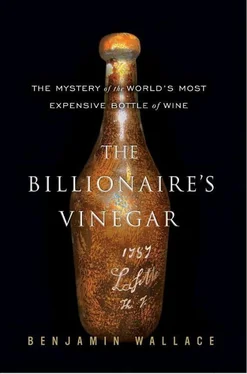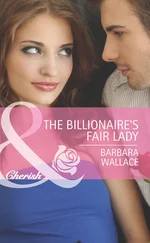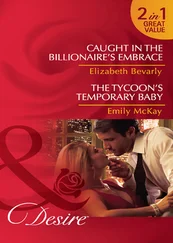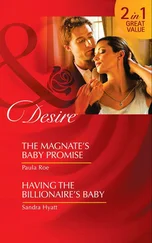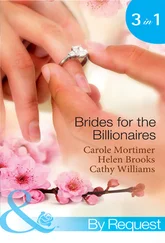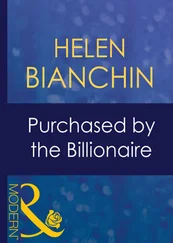“Naturally our buddy is upset,” editor Rudolf Knoll wrote. “Hubsi, let’s hear from you.” When the magazine subsequently received another mysterious, unsigned, no-return-address letter, this one from “Uschi Berthold, Munich” (the same person who had written to Frericks’s wife), the editors wondered, in the magazine: “Perhaps our friend has undergone a sex change….”
PREVIOUSLY, WHEN HIS wines had been questioned on the basis of how they tasted, Rodenstock had been able to fall back on his unrivaled experience. How an old wine might taste was so uncertain that only the most knowledgeable could confidently assert whether a particular bottle was as it should be. In this uncertain environment, Rodenstock and Broadbent were elite possessors of occult knowledge, high priests no one dared challenge. When Rodenstock played the experience card, it was a conversation stopper. Those few who had the temerity to doubt him, Rodenstock would belittle as lacking the expertise to do so. Regarding the Jefferson bottles, he would always cite the 1985 lab test he had had performed on the 1787 Yquem.
But rival scientific evidence was something he had never before faced. He couldn’t dismiss it with rhetoric. Late in the summer of 1992—with the GSF test results pointing to some kind of tampering, with Frericks telling everyone who would listen that the Jefferson bottles were “the Hitler diaries of wine,” and with open derision in Swiss wine circles—Rodenstock retained Raphael Mullis, a Zurich lawyer. Mullis had attended several of his tastings, first gaining entrée by agreeing to serve as a commis at one of the Arlberg events, and in later years attending as a guest and serving as notary for corks and bottles. On Rodenstock’s behalf, Mullis threatened legal action against both Vinum and the Steinfels auction house. Whenever a letter from Mullis arrived, Wermuth, the auctioneer, would instruct his secretary to address his response to “Mr. Moulis,” the name of a minor Bordeaux appellation.
By now, Rodenstock had determined that he needed more persuasive evidence to make his case. Again using Mullis as his lawyer, Rodenstock gave a small bottle of “1787 Lafite” engraved with “Th.J.” to the Eidgenössische Technische Hochschule in Zurich. ETH was home to Georges Bonani, a chemical archaeologist who in 1989 had used carbon dating to debunk the Shroud of Turin. On August 27, Rodenstock, Mullis, Broadbent, and Bonani assembled at ETH to open the bottle. The men gathered in a spartan meeting room with a panoramic black-and-white photograph of the Manhattan skyline on the wall. For the sake of comparison, Rodenstock had brought along an old Burgundy, a half-bottle of 1893 Pommard. As expected for a younger wine, it had a higher fill level than the “1787 Lafite.” The Pommard’s cork came out cleanly.
The Lafite was placed upright on a wood conference table, and Rodenstock hunched over the bottle and worked on the crumbly gray wax seal with a knife, while Broadbent sat writing his observations in one of his red notebooks. The cork, black and shrunken, crumbled as it was drawn, and appeared to be considerably older than the cork from the Pommard. Rodenstock rolled up his sleeves and loosened his tie.
Broadbent brought the bottle close to his face, then poured a small glass. He held it against the white backdrop of a notebook page, and Rodenstock and Bonani leaned in to examine it. The wine was pale. Broadbent poured a small amount into a test tube, which he then sealed, to give to Professor E. T. (“Teddy”) Hall, an Oxford scientist. Like Bonani, Hall had been involved in dating the Shroud of Turin, although he had first made his name, in the 1950s, by using X-ray fluorescence to debunk the Piltdown fossils as a hoax. Hall was also “a very keen wine man,” in Broadbent’s words, with a substantial cellar, part of which Christie’s would later sell. Rodenstock, Mullis, and Broadbent each tasted the wine. It had no fruit left, and was Madeira-like, though not so sweet. Broadbent and Mullis were both convinced the wine was old and authentic.
Afterward, Rodenstock, Broadbent, and Mullis ate lunch at a posh hotel on Lake Zurich. Later, Rodenstock would take a blue ballpoint and inscribe the back of a photograph of the bottle-opening at ETH for Mullis: “For a 200-year-old wine, very interesting.” But even Rodenstock’s Swiss lawyer—to whom Rodenstock revealed no more about the Jefferson bottles’ provenance than he had to Broadbent—was puzzled by something: the bottle was tiny. It wasn’t even as large as a half-bottle. None of the articles describing Rodenstock’s find had ever mentioned tiny bottles being part of the cache.
Broadbent returned to London carrying the sample for Professor Hall. At Oxford, Hall produced a 1955 Lafite from his own cellar, and Broadbent a 1962 Lafite from Christie’s cellar, for comparison. Both were opened, and a portion of each sent back to Zurich for Bonani to use as well. Hall was going to test the 1787 Lafite sample, as well as the younger Lafites. He cautioned Broadbent that while it was possible to prove that something dated from after the onset of the atomic era, there was a two-hundred-year gap before that when, because of the imprecision of carbon dating, it was nearly impossible to come up with a positive finding.
TO JUDGE BY the reports in the wine media, things soon began to go Rodenstock’s way. In December, Rodenstock received Bonani’s report at his address in Monaco. Bonani had used accelerator mass spectrometry, the same technology used by the University of Toronto as part of the GSF tests. Writing from Zurich on December 7, 1992, Bonani reported that his radiocarbon dating pegged the wine around 1830, with a thirty-five-year margin of error. This meant that the wine’s vintage could fall anywhere between 1795 and 1865. The cork’s date range, meanwhile, was between 1825 and 1895. Bonani wrote that “the radiocarbon tests carried out on the 1787 Lafite show no mixing of wine younger than 1962. The reported age of the wine and its cork fall within the confidence limits.” Hall, according to Broadbent, obtained a similar result. The Oxford lab would later report that it could not find the results, a highly unusual event, according to its deputy director.
In actuality, Rodenstock had not proved his case. Although old, both wine and cork had been shown to be younger than 1787. Moreover, the 1985 lab result purporting to show that the cork in the 1787 Yquem was “original” had analyzed its chemical composition but proven nothing about the age of the wine or the cork. To the contrary, Heinz Eschnauer, a German chemist to whom Rodenstock had sent part of the cork, specifically rejected Rodenstock’s contention that it was possible to confirm the wine’s age based on the tests he performed. This was the same scientist who, according to a note by Broadbent in a 1986 auction catalog, had “rigorously examined” the 1784 Yquem Christie’s ended up selling to Iyad Shiblaq/Dodi Al-Fayed. Most damningly, on December 14, 1992, the Munich court found that in the case of the Frericks bottle tested earlier, Rodenstock “adulterated the wine or knowingly offered adulterated wine.”
Remarkably, the explicit finding of guilt went unnoted in the wine media, the science of the 1985 tests went unanalyzed, and Rodenstock and Broadbent reveled in their test result, glossing over the fact that it wasn’t actually exculpatory. On December 15, 1992, writing from Monte Carlo, Rodenstock told Rarities co-editor Dennis Foley, who was sympathetic to the German, that the recent test had vindicated him: There was no post-1962 wine in the bottle that had just been carbon dated; moreover, “the wine couldn’t be younger than 1795 on average.” Rodenstock raised questions about GSF’s impartiality—why had it taken a year to do the test and announce the results?—and suggested again that Frericks must have manipulated the bottle provided to GSF.
Читать дальше
